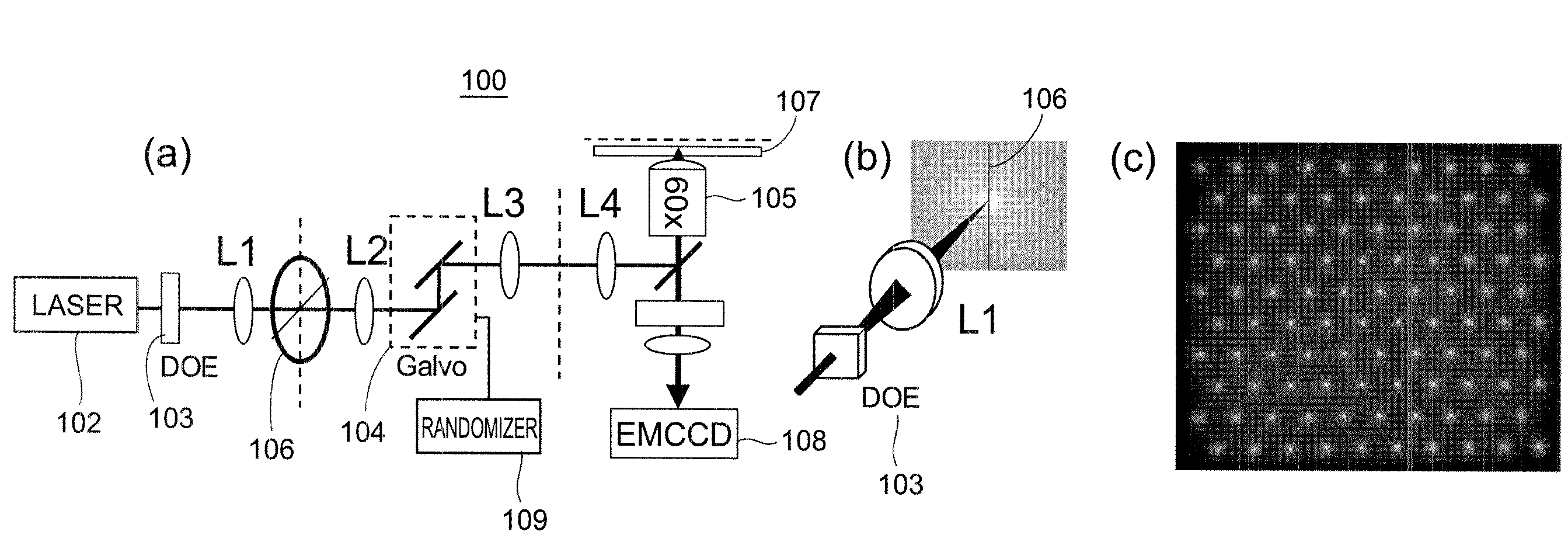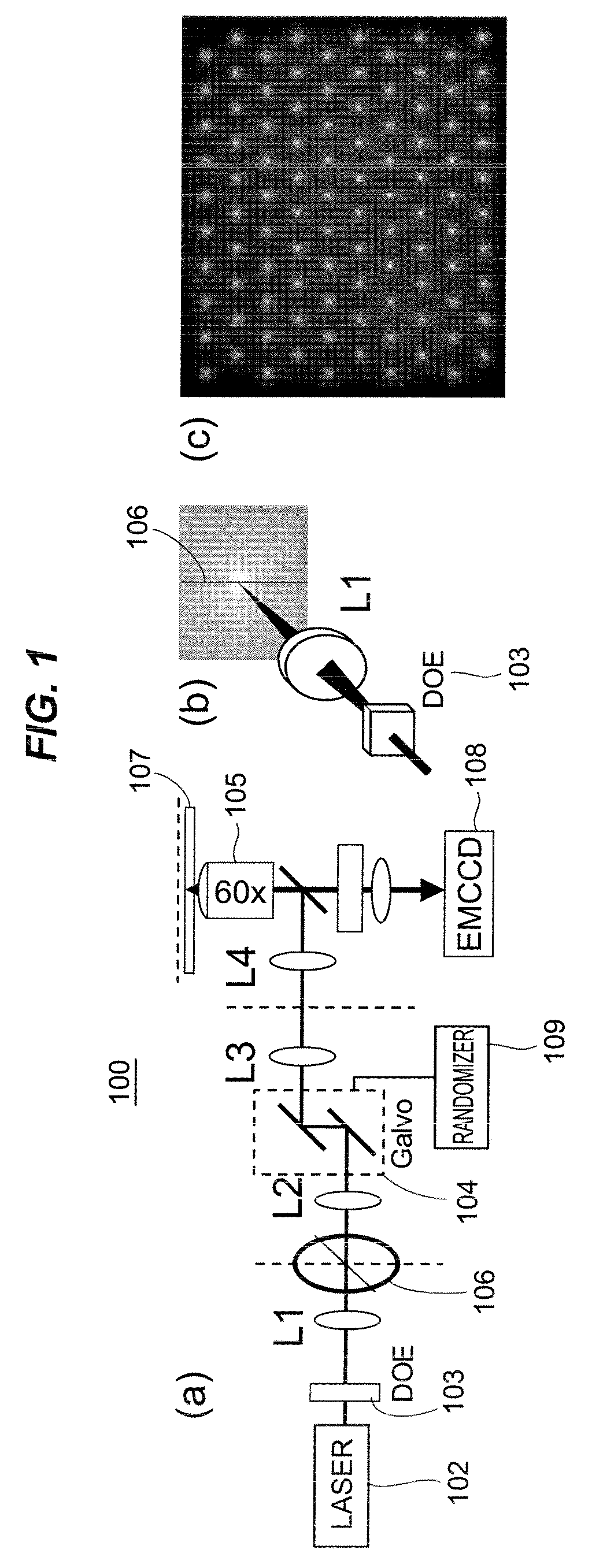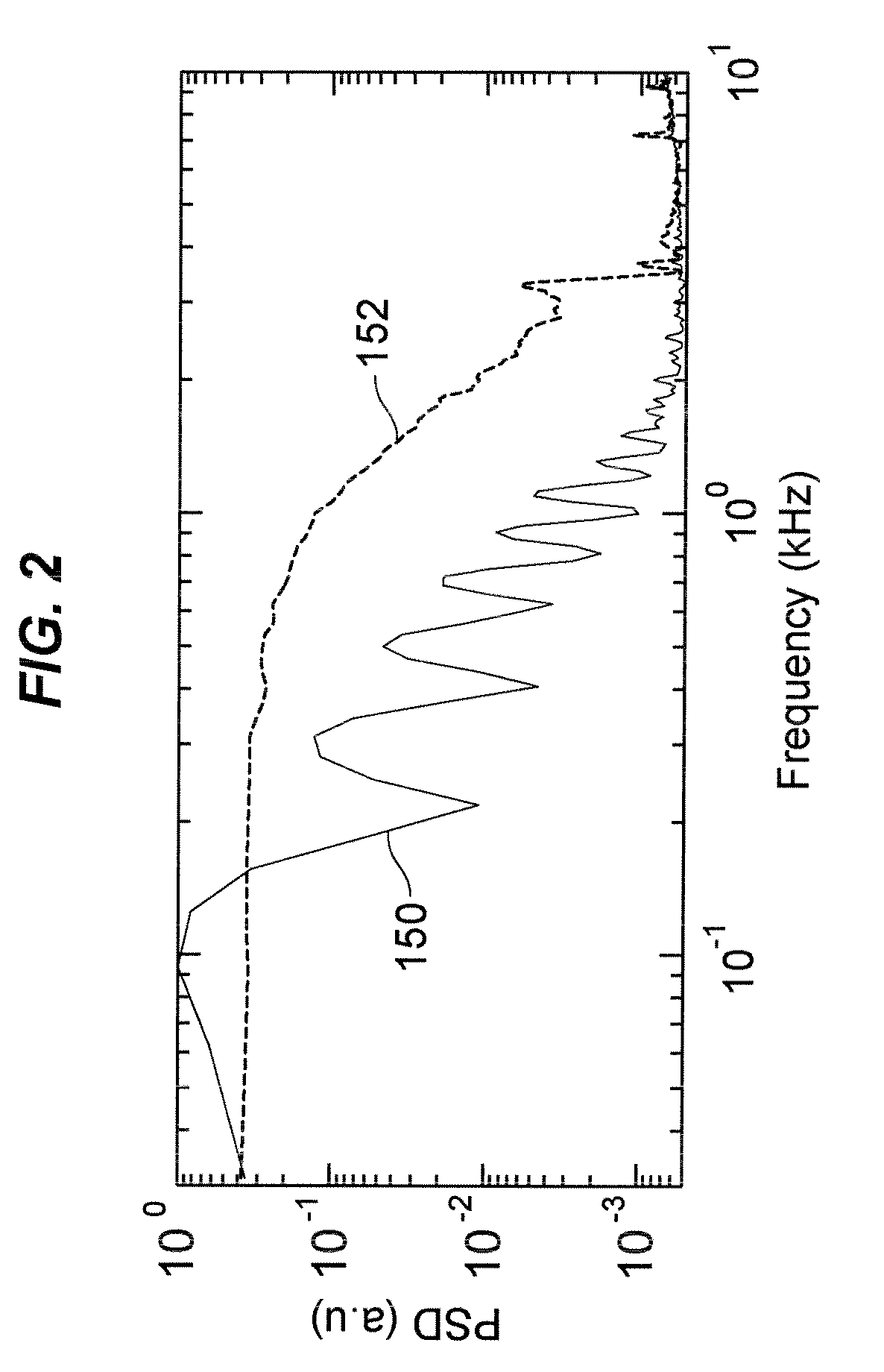Stochastic Scanning Apparatus Using Multiphoton Multifocal Source
a scanning apparatus and multi-photon technology, applied in the field of multi-photon microscopy imaging, can solve problems such as random scanning of foci beams, and achieve the effects of reducing overall, low background, and powerful techniqu
- Summary
- Abstract
- Description
- Claims
- Application Information
AI Technical Summary
Benefits of technology
Problems solved by technology
Method used
Image
Examples
Embodiment Construction
[0028]The present application demonstrates stochastic scanning multiphoton multifocal microscopy (SS-MMM) fluorescence techniques that may be used for high-speed imaging, such as of multiparticle tracking of fast dynamics over large fields of view.
[0029]In an example, a hexagonal array of 100 excitation foci generated from a DOE is described. Stochastically scanning the array across a focal region at a sample provides enhancement in sampling bandwidth and imaging uniformity versus raster scanning. Instead of using a single frequency necessarily well below the resonant frequency, the entire optical scanner (e.g., galvanometer) bandwidth may be used (with amplitude up to 3 kHz, 10× greater than the galvanometer resonant frequency). This approach allows >100-fold more temporal information to be obtained with more uniform coverage over a sample than simply overdriving a multifocal rastering waveform on a galvanometer. The limit is rarefication of sampling, which leads to sparsity in the...
PUM
 Login to View More
Login to View More Abstract
Description
Claims
Application Information
 Login to View More
Login to View More - R&D
- Intellectual Property
- Life Sciences
- Materials
- Tech Scout
- Unparalleled Data Quality
- Higher Quality Content
- 60% Fewer Hallucinations
Browse by: Latest US Patents, China's latest patents, Technical Efficacy Thesaurus, Application Domain, Technology Topic, Popular Technical Reports.
© 2025 PatSnap. All rights reserved.Legal|Privacy policy|Modern Slavery Act Transparency Statement|Sitemap|About US| Contact US: help@patsnap.com



